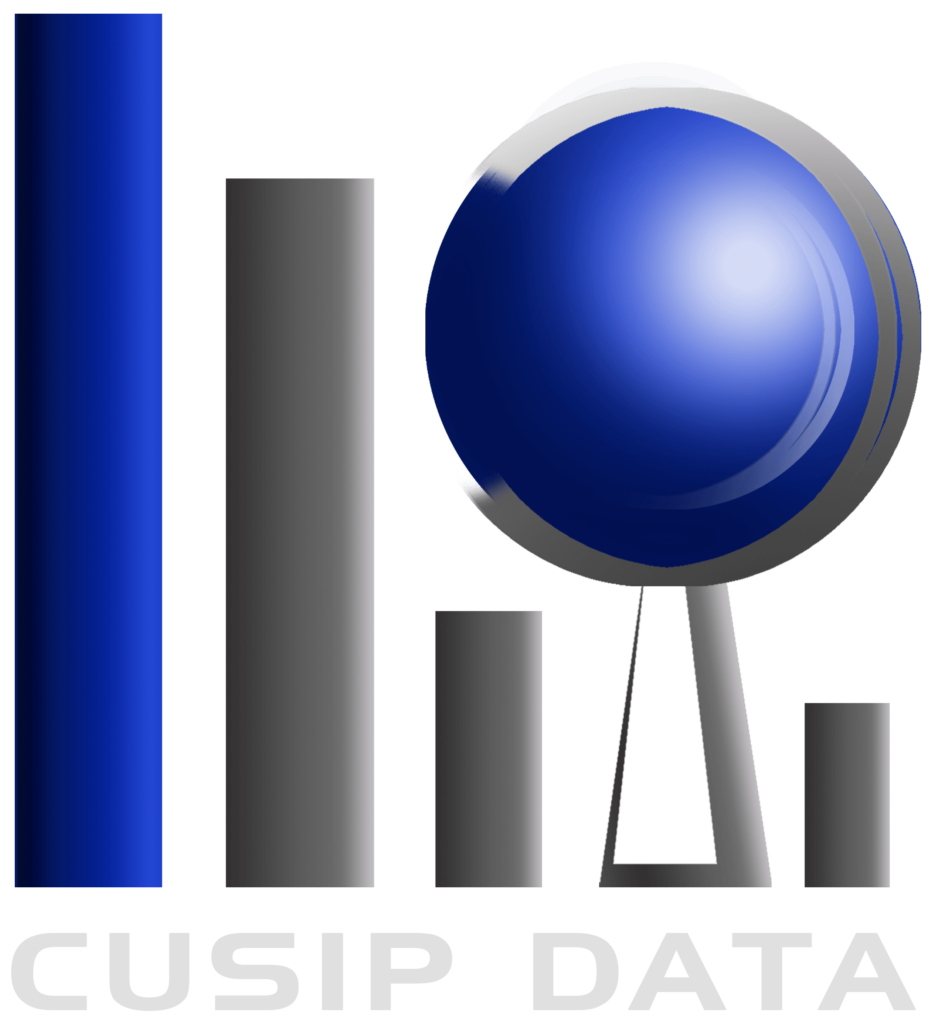- HOME
- About us
- Services
- COVID-19 and CUSIP Codes: Impacts on Mortgage Loan Securities Markets
- The Significance of CUSIP Numbers in Mortgage-Backed Securities Trading
- CUSIP Codes and Consumer Protection in Mortgage Lending
- CUSIP Codes and ESG Factors in Mortgage Loan Investments
- CUSIP Codes and Loan Pools: Maximizing Value in Mortgage Loan Sales
- CUSIP Codes and Mortgage Loan Origination: What Homebuyers Should Ask
- CUSIP Codes and Risk Management in Mortgage Loan Portfolios
- CUSIP vs. Ticker Symbols: Key Differences in Mortgage Loan Securities
- Emerging Trends in CUSIP Use within Mortgage Loan Securities
- How CUSIP Codes Affect Mortgage Loan Transparency for Homebuyers
- How CUSIP Codes Help Investors Navigate Mortgage-Backed Securities
- How CUSIP Numbers Can Help Consumers Understand Mortgage Loan Risks
- How CUSIP Numbers Facilitate Mortgage Loan Due Diligence for Sellers
- Legal and Regulatory Aspects of CUSIP Codes in Mortgage Loan Sales
- Liquidity Enhancement: CUSIP Codes in the Mortgage Loan Sales Process
- Streamlining Mortgage Loan Sales with CUSIP Number Integration
- The Evolution of CUSIP Codes in Mortgage-Backed Securities Markets
- The Future of CUSIP Codes: Innovations in Mortgage Loan Markets
- The Impact of CUSIP Standardization on Mortgage Loan Securities
- The Importance of CUSIP Codes in Selling Mortgage Loans
- The Role of CUSIP Codes in Mortgage Loan Documentation for Borrowers
- The Role of CUSIP Codes in Mortgage Loan Securitization
- The Role of CUSIP Codes in Mortgage-Backed Securities
- Transparency and CUSIP Codes in the Secondary Mortgage Loan Market
- Understanding CUSIP Codes: A Primer for Mortgage Loan Securities
- Using CUSIP Codes to Track and Manage Mortgage Loan Information
- Using CUSIP Data to Evaluate Mortgage Loan Pricing Strategies
- What Consumers Should Know About CUSIP Numbers in Mortgage Loans
- CUSIP & Securitization of Mortgage Loans – A Journey into Financial Clarity
- The Essential Interplay between CUSIP & Securitization of Mortgage Loans
- CUSIP & Securitization of Mortgage Loans – Structuring a Transparent Market Landscape
- The Synchrony of CUSIP & Auto Loan Securitization speeds up Finance
- The alignment of “CUSIP & Securitization of Auto Loans” evolves the realm of finance
- The Synergistic Integration of CUSIP & Auto Loan Securitization
- Analyzing CUSIP and Securitization of Credit Card Loans
- CUSIP Numbers and Asset Allocation Strategies
- The Global Reach of CUSIP Numbers
- How Corporate Actions lead to changes of CUSIP Number
- Protect CUSIP Numbers for Security and Fraud Prevention
- CUSIP Data: Key Insights for Mortgage Loan Investors
- The Role of CUSIP Numbers in Regulatory Compliance
- The Importance of CUSIP Code in Risk Management
- CUSIP and Mortgage Loans: Standardization in a Complex Financial Landscape
- CUSIP Data: Important approach to Mortgage Loan Investors
- Mortgage Loan Investor’s Guide: Essential Insights into CUSIP Data
- CUSIP and Securitization of Credit Card Loans: Navigating the Financial Matrix
- CUSIP Numbers in Mutual Funds and ETFs: A profound search into Fund Identification and Management
- CUSIP & Securitization of Auto Loans: Driving the Financial Future
- A Deep Dive into the Power of CUSIP Data in Risk Management
- The CUSIP Advantage of Navigating the Auto Loan Securitization Maze
- Mortgage-Backed Securities and CUSIP Codes: A Harmonious set of two
- Mastering CUSIP Codes: Tips and Tricks for Financial Professionals
- Fine-Tuning Your Auto Loan Investment Strategy with CUSIP Intelligence
- Blog
- FAQ
- Contact Us
The Role of CUSIP Numbers in Regulatory Compliance


Navigating the complex world of the financial markets demands a system that promotes organization, clarity, and coherence. The CUSIP Numbers system offers precisely this, providing a standardized mechanism to identify securities and financial instruments. One cannot overstate the role of CUSIP numbers in regulatory compliance, especially in the context of regulators like the U.S. Securities and Exchange Commission (SEC). This essential system ensures financial market transparency, efficiency, and accountability.
Origins and Structure of CUSIP Numbers
The CUSIP system was inaugurated in 1964 to address the ever-growing need for a structured identification method for securities. Each CUSIP identifier comprises a nine-character alphanumeric code. The initial six characters pinpoint the issuer, the subsequent two designate the security type, and the last one acts as a checksum. The system has grown indispensable for the U.S. and Canadian financial arenas.
Enhancing Transparency with CUSIP Numbers
Transparency stands as a pillar in the foundation of any robust financial system. CUSIP numbers enhance this transparency in a multi-fold manner:
- Traceability: A unique CUSIP number assigned to each security means that the asset’s history, from issuance to transactions and ownership changes, can be followed with precision. This traceability ensures that investors, financial institutions, and regulators maintain a coherent understanding of the asset’s journey.
- Efficient Data Management: In our information age, managing vast quantities of data accurately is imperative. The role of CUSIP numbers in regulatory compliance offers a standardized foundation upon which data can be aggregated, analyzed, and reported. This reduces errors, eliminates duplications, and ensures that regulatory bodies like the SEC can depend on the information’s integrity.
- Operational Efficacy: By leveraging the CUSIP system, various stakeholders in the financial ecosystem can make processes like trading, clearing, and settlement more streamlined. This operational efficiency subsequently simplifies regulatory compliance, ensuring that transactions are processed correctly and within the stipulated timeframes.
- Risk Management: A securities market without risks is unimaginable. However, role of CUSIP numbers in regulatory compliance offer tools for efficient risk management. Regulators and investors can accurately understand and assess the risk profiles of various securities, enabling them to make informed decisions concerning risk mitigation.
- Upholding Accountability: The CUSIP system’s architecture ensures that any malpractice, deviations, or fraudulent activities can be quickly identified. The unique identifier attached to securities means that suspicious activities can be tracked, investigated, and the responsible entities held accountable.




The Role of CUSIP Numbers
Transparency and Traceability: The primary role of CUSIP numbers in regulatory compliance is to promote transparency. By providing each security with a unique identification number, regulators, financial institutions, and investors can easily trace the history, ownership, and transactions associated with any given security. This traceability ensures that all parties have a clear understanding of the asset’s history and performance.
- Data Accuracy: In the era of big data, having accurate and standardized information is essential. The CUSIP system aids regulatory bodies like the SEC in aggregating and analyzing vast amounts of data. By using a standardized identification system, errors, duplications, or misidentifications can be reduced, ensuring that the data regulators rely on is as accurate as possible.
- Streamlining Processes: The CUSIP system simplifies many of the operational processes associated with securities transactions. The role of CUSIP numbers in regulatory compliance is a unique identifier, various tasks like trading, clearing, and settlement become more efficient. This streamlining further aids in regulatory compliance, as it ensures that transactions are processed correctly and in a timely manner.
- Risk Management: CUSIP numbers play an essential role in risk management strategies. Regulatory bodies, financial institutions, and investors utilize these numbers to assess the risk profiles of different securities. By having a clear understanding of each security’s history and performance, they can make more informed decisions about risk exposure.
- Ensuring Accountability: With the CUSIP system in place, regulators can quickly identify and hold accountable those involved in malpractice or fraud. Given that each security has a unique identifier, tracking down and investigating suspicious activities becomes significantly easier.
SEC's Reliance on CUSIP Numbers
The SEC stands sentinel over the U.S. financial markets, ensuring their integrity and trustworthiness. In executing this daunting task, the SEC’s reliance on CUSIP numbers is undeniable:
- Continuous Surveillance: One of the SEC’s primary duties is to monitor the markets relentlessly, looking for anomalies, possible insider trading, or other prohibited activities. CUSIP numbers offer a swift mechanism to flag and investigate suspicious transactions, ensuring timely interventions.
- Regulatory Reporting: When companies engage with the SEC through various filings, be it quarterly reports, major event disclosures, or merger announcements, they incorporate CUSIP numbers to identify the concerned securities. This allows the SEC to manage, process, and publicize this information efficiently.
- Investor Safeguarding: Central to the SEC’s mission is the protection of investors. The CUSIP system ensures that investors have timely access to transparent and accurate data about their investments. This openness fosters investor trust, driving them to make educated decisions.


The Expanding Role of CUSIP in Global Finance
As we progress into an era where financial markets are becoming increasingly interconnected, the role of systems like SEC’s reliance on CUSIP numbers CUSIP in regulatory compliance becomes more critical. As more foreign entities seek to engage with the U.S. markets, understanding and integrating with the CUSIP system will be crucial.
Moreover, as new types of financial instruments emerge, the adaptability of the role of CUSIP numbers in regulatory compliance will be tested. Its ability to evolve while retaining its core principles of transparency and standardization will determine its continued relevance in the future.
Conclusion
To comprehend the vast, interconnected world of financial markets, one requires tools that offer clarity and precision. The CUSIP system, with its structured approach to securities identification, stands tall as one such tool. Its pivotal role in regulatory compliance, especially in aiding institutions like the SEC, solidifies its place as a cornerstone of modern finance. As the financial landscape continues to evolve, the significance of CUSIP in ensuring regulatory coherence, investor protection, and market integrity will only magnify.
In the intricate web of financial transactions and securities, the CUSIP system stands as a beacon of order and standardization. The role of CUSIP numbers in regulatory compliance cannot be overstated. It ensures that regulatory bodies like the SEC can effectively oversee financial markets, maintain transparency, and promote the fair and orderly functioning of the markets.
As financial markets continue to evolve with technology and globalization, the importance of having a standardized identification system for securities will only grow. The role of CUSIP numbers in regulatory compliance in USIP system will remain instrumental in ensuring that regulatory compliance is maintained, risks are managed, and investors are protected.
